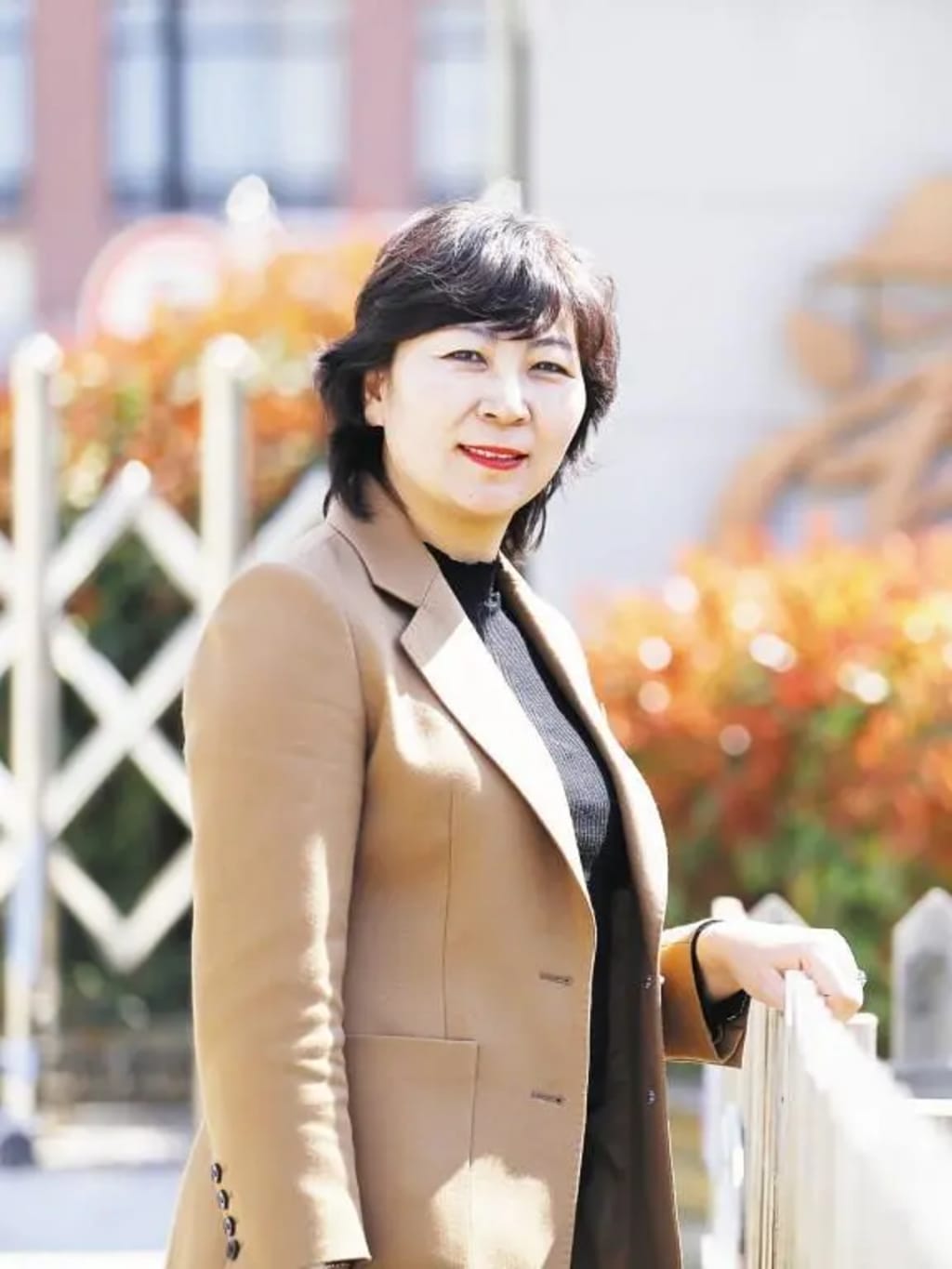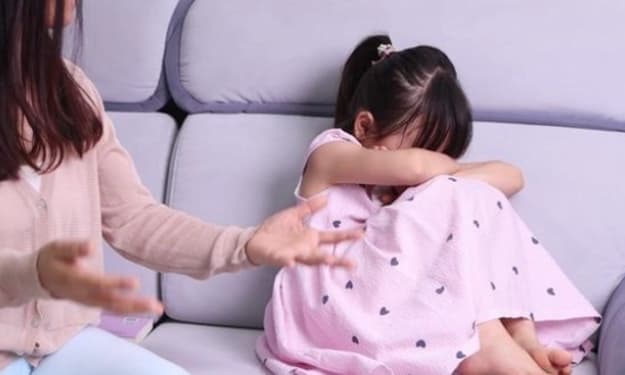
Principal's Impression
Low-key, modest, simple,d warm - in the eyes of teachers, Perla, who has never learned to "put on a show", is the most unlikeable principal. However, when she talks about school, education, curriculum,d students, her gentle and friendly eyes are half warm and half determined. What is education? She has her answer: education is to give students the best and most appropriate curriculum, education is to create a classroom full of life, education is to adhere to the position of children, the spirit of play, and link with life, education is to make children more like children, make childhood more like childhood.
How did a new school with no advantages in terms of location, teachers, and student population grow in six years? In the context of "whole-person education," how does deep learning happen, from multidisciplinary integration to borderless learning? How can each educational space on campus become a living field that meets the needs of students' individual development and allows each student to see his or her growing self on campus?
The search for answers all points to one name and one group of people - Perla and the faculty and staff fighting with her at Aido Elementary School in Jinan City's Central District. Since 2016, Perla and the cadres and teachers of Aidu Primary School have been pioneering and changing "24/7", developing a distinctive "Aidu Curriculum", creating an educational space full of life rhythms, and making "new Childhood Education" nourishes the students' life growth.
Adhering to the position of children
Start the journey of "New Childhood" with the key of "Whole Curriculum
In 2016, Perla took up her new position as principal of Aido Elementary School. In her new position, Perla had to face a new environment and had to think about two things: First, the composition of the student population, which included students from urban areas, children of migrant workers, and children from rural areas, with great differences among students. The second is that the teacher structure is not reason enough, the whole school "after 90" new teachers accounted for 70%, the lack of backbone.
How should we go about it? As she was pondering, a study trip opened her eyes - in Beijing, she met with the "whole curriculum" and saw the possibility of new development for her new school.
"Perla was deeply impressed by the whole curriculum concept of "adhering to the child's stance, the spirit of play, and the link to life", which she began to study and practice as early as when she was the Vice Principal of Weidi Primary School in Jinan, where she had made small achievements. She understands that the kind of education and the kind of school is what the curriculum is. The curriculum is the key element that determines where the school will go, and the coordinate system that determines how teachers and students will walk. What's more, the concept of "Children's Stance, Play Spirit, Linking Life" is the key to unlocking an educational dream in Perla's heart. This dream is very simple, that is, to let education truly return childhood to children, and to build a school that children like.
What is childhood? In Perla's childhood memory, childhood is the curl of cooking smoke, the smell of chickens and dogs, the school bag stuffed with jump ropes, shuttlecocks, and leather bands, playing freely with buddies during class, running wildly in the fields after school, climbing trees and pulling out bird's nests ......
"And what about the childhood of children now? Besides screens, besides video games, it's a jungle of steel and concrete, a jumble of tall buildings that separate them from each other." Perla said, "Especially many children are with their parents from the countryside into the city, partners scattered, the country voice is gone, less neighborhood contact, childhood lost a lot of things that should have been."
Perla advocates that to return childhood to children, we need to reconstruct the curriculum to make up for the missing nature education, break the school walls, incorporate life into the curriculum, incorporate the world into the teaching materials, and re-establish emotional interaction between people and themselves, people and nature, themselves and others, and individuals and society. Based on this, a "new childhood education" is created in the context of "whole-person education", providing a wide range of resources and a platform for students to truly learn.

"Introducing the whole curriculum, building the school's ecological culture with the curriculum, allowing the curriculum to polish the school's color and lay the foundation for its development." Once this idea became clear, Perla led the teachers to dive in headfirst. The start of a new school on the outskirts of the town began with curriculum reform.
Students show off their skills at the art festival
Learning without Boundaries
Students experience a different way of learning
The establishment of the curriculum reform concept certainly gave teachers direction and a goal. For a group of young teachers with little teaching experience, knowing where they should go is crucial. However, it is not easy to translate the ideas into practice, implement them into daily teaching actions, and reflect them in every lesson. It is especially a challenge for teachers who have no ready-made experience to draw on.
"Without the guidance of others, I was afraid to teach the lessons, and I had no bottom in my heart." Language teacher Zhang Wen said, "There was also a lot of lack of understanding from parents." With the new curriculum concept, the structure of the curriculum has changed and the way of learning has changed. In the classroom, instead of the traditional "sit in rows, teachers talk, students listen," the classroom has been turned into an "activity field" based on the reconstructed curriculum; homework is no longer simply writing words and doing exercises, but a series of colorful The homework is no longer just writing words and doing exercises, but a series of colorful learning activities. For example, "Spring Lesson", "A Sandbag with the Taste of Autumn", and "My Animal Friends". What students do is go beyond the subject, discover life, investigate problems, and solve them - the barriers between learning and life are broken down, and the boundaries between learning and life become increasingly blurred. But this seems to many parents to be a "bad job", and they then have doubts: Is the school just going to let the kids keep "playing"?
What parents don't realize is that the "whole curriculum" approach to learning emphasizes multidisciplinary integration, links to life, and learning through experience. For example, during Perla's development of interdisciplinary learning, the fourth-grade teachers discovered that the themes of the fourth, seventh, and eighth units in the Ministry of Education textbook were "Myths and Legends," "Historical Figures," and "Stories of Great Men. The text of these three units was integrated under the theme of "Hero's Journey" and combined with the reading of the entire book "The Wizard of Oz".
The students drew mind maps to sort out the plot and characters of the book. Through a series of readings, analyses, and integrated compositions, students moved from "heroes in the curriculum" to finding and understanding "heroes in life" and finally to understanding what a "hero" is in a holistic and three-dimensional way. The course will move from "heroes in the curriculum" to finding and understanding "heroes in life" and finally to understanding what a "hero" is in a comprehensive and three-dimensional way. Immediately afterward, students deepen their understanding of heroes by refining the heroic spirit of different characters through making business cards and writing award speeches for heroes from the past and present.
"Is this the end of learning? Heroes are still far away from students. Learning at this point is superficial; students understand the external hero and don't associate the hero with themselves; real learning must return to themselves." Perla said it is especially important for teachers to lead students through a study of the literary work "The Wizard of Oz" to understand the characters' journeys to pursue their aspirations and to know that overcoming themselves is also heroic.
The students worked together to create their own "magic school" based on the book Oz Castle. From designing to coloring to building, 192 students in six classes spent a week working together to complete the challenge. During this time, when students disagreed, there were arguments and negotiations; when objects were damaged, they tried to fix them; when the paint was not good, they repainted it; and they were thinking and studying how to build to make the "Magic School" more beautiful and solid. It was during this time that students learned to give in, cooperate, and be their heroes.
In such a course of study, both textbooks and extracurricular books become mere resources and examples of learning. The length of language learning remains the same, but the breadth and depth are greatly increased; from a single teacher to a rich reading experience, students' minds collide and their abilities are enhanced, and they move from "reading people" to "reading themselves", in the transition from lower-order to higher-order thinking. In the transition from lower-order to higher-order thinking, deep learning occurs naturally.
"True education is about using the whole of life and the world, the whole of history and culture, to infuse students, to ignite them, to enlighten them." With this awareness, Perla believes, "we can have a breakthrough in the classroom of the moment and make it exude greatness and become a classroom that students love."
"The 100-Day Curriculum and the "Three Questions of Love for the City"
Giving students a reason to love school
December 9, 2016, marked the 100th day of Aido Elementary School's existence. The "100-day curriculum" was born as a result, and parents began to reacquaint themselves with Aido Elementary School and education, and then became strong "allies" of the school.
"According to Chinese culture, a child's 100th day is celebrated on the 100th day of life; what should we do for the 100th day of Aido?" Perla threw out this question, which triggered a round of brainstorming among the teachers. In the end, we all agreed that we should abandon the mindset of always pursuing grand, grand, and enthusiastic activities in the past and develop the "100-day celebration" into a "100-day curriculum".
The celebration focuses on the display, the external warmth and lively; while the curriculum emphasizes the educational value. The "100-day curriculum" principle of "child-centered and fun" was soon established.
The "100-day course" was divided into 7 days -
On the first day, the 100th 100th-day was rung to remind students of their memories, collect their blessings, and let them feel the importance of the 100 days of school to their growth.
On the second and third days, students looked for details of their growth during the 100 days and expressed them in their favorite way.
On the third, fourth, and fifth d, days, students share their growth details with each g and praise each other.
On the sixth day, 100 days of creative crafting were carried outweream sausages, fruits, beans, and little friends ...... become for students' creativity.
On the seventh day, students found their favorite friends on campus and formed "twins". The "twins" came into the classroom to work together on the "100" micro-curriculum and paint the "100-meter scroll".
During the development of the curriculum, the teachers became more aware that everything in school should be directed to children and that "people" should be at the center. Perla and the teachers were most delighted that when parents reviewed the changes in the 100 days with their children, they found that their children had read at least 50 picture books, learned so much, made many friends, expressed themselves more confidently in front of others, and were more enthusiastic about learning. ...... Parents changed from skepticism to recognition, understanding, and support, and the, relationship between home and school became more harmonious. The relationship between home and school is better.
Since the beginning of the 100-day program, cross-class and cross-age interactions have become an important part of the curriculum. On the first day of first grade at Aido Elementary School, each student draws a self-portrait and introduces him/herself to the class, and then the entire class is grouped to introduce themselves to each other. The students with the strongest social skills were able to make five or six friends in half a day, and the least had one or two.
On the second day of school, each sixth-grade brother and sister "adopted" a child and took them around the campus, teaching them how to hold a pencil, what it means to go to and from class, and telling them picture book stories. At this time, if a student is asked "why do you want to go to school", the answer will most likely be "my friend xxx is waiting for me".
During these 100 days, the "new childhood education" permeates every detail of education. When the 100-day program came to a successful conclusion, Perla, who likes to think, reviewed the 100-day program and found the question: What did the program leave behind for the students after the hustle and bustle? The entire program was indeed focused on the children, and it was indeed fun and interesting, but if that was all there was to it, the activities at Disneyland and the playground were far more lively and fun than the 100100-Diagram.
Perla found that during the implementation of the 100-day program, the students were happy, but their minds were not stimulated or ignited, and their perceptions were not touched or changed.
Perla then organized the teachers to ask three follow-up questions.
Question 1: Is the curriculum designed to be child-centered and child-friendly?
Question 2: Does the implementation of the curriculum reach students' minds and stimulate their imagination?
Question 3: Does the implementation of the curriculum sublimate the students' perceptions?
"Since then, we have used these three follow-up questions as the top-level follow-up questions for designing and implementing all curricula, and have called them the 'Aido Three Questions'." Since then, Perla says, the annual "100-day program" for incoming first-graders has been one of the "initiation rites" for each child.
"The 100-Day Program and the "Three Questions of Edu" not only give students 100 days of growth but also prompt teachers to begin to understand education and curriculum anew. "I think: education is a kind of relationship, and good relationship promotes good growth of students. So, we have to create a good ecological relationship." This was the insight of young teacher Li Ying.
The "100-day curriculum", which has been highly praised by parents, is like a flame that ignites the teachers' confidence to continue to do more thematic courses. Along with the in-depth exploration of each theme, the project learning under the concept of "whole curriculum" has been expanded. Li Ying organized teachers to design the "Birth of a Book" course, which gave students a sense of layout design and editing, and printing. Teacher Wenping Chen has been working on the whole course of nature notes, and after several years of exploration, she has gradually integrated natural science with literature and art and enriched the scope of nature notes.
Reconfiguring the learning space
Making learning can happen anytime, anywhere
"We are a 'little shell class', each shell has a tiny pearl living in it, and this pearl is the seed of a dream. The little shells have different highlights and values, and different dreams. ...... When the pearls grow slowly, they will eventually produce the most beautiful pearls." This is the common expectation of the teachers and students of the "Little Shell Class".
In Ai Du Primary School, each classroom has a special name, such as "Little Shell Class", "Rainbow Class", "Green Bamboo Class", "Star or Class Each classroom has a special name, such as "Little Shell Class", "Rainbow Class", "Green Bamboo Class", "Star Class", "Little Bee Class" ....... Each classroom has a common expectation for the growth of life by teachers and students. Each classroom also has a "birthday wall" - a way for each student to feel a sense of belonging and self-worth, "I am different, I am important".
This is just one part of Aido Elementary's commitment to creating a "classroom full of life" for its students. From the classrooms to the hallways to the campus, the student's growth is evident in every corner. The curriculum has changed, and so has the space. The curriculum is being extended, the learning is accumulating, and the learning is being displayed everywhere from the classrooms to the hallways and foyers, giving students great recognition. "Last semester, it still sprang curriculum mapping, now it's an autumn fairy tale; last semester it was the study of Chinese New Year customs, now it's a 'changing world, changing me' growth roadmap." Perla believes that the often-changing and always-new works turn a static and limited physical space into a dynamic and infinite space for growth.
In addition, the "Sound of Spring" concert hall, the Lego wall, the technology corner, the "One Meter Sun" plant corner, the exchange space, and the open theater have all become learning spaces and growth fields for the students.
"Space is the curriculum." Behind these designs is Perla's thinking and knowledge of learning space. "What is school?
About the Creator
Karpenaru
Knowledgeispower.






Comments
There are no comments for this story
Be the first to respond and start the conversation.